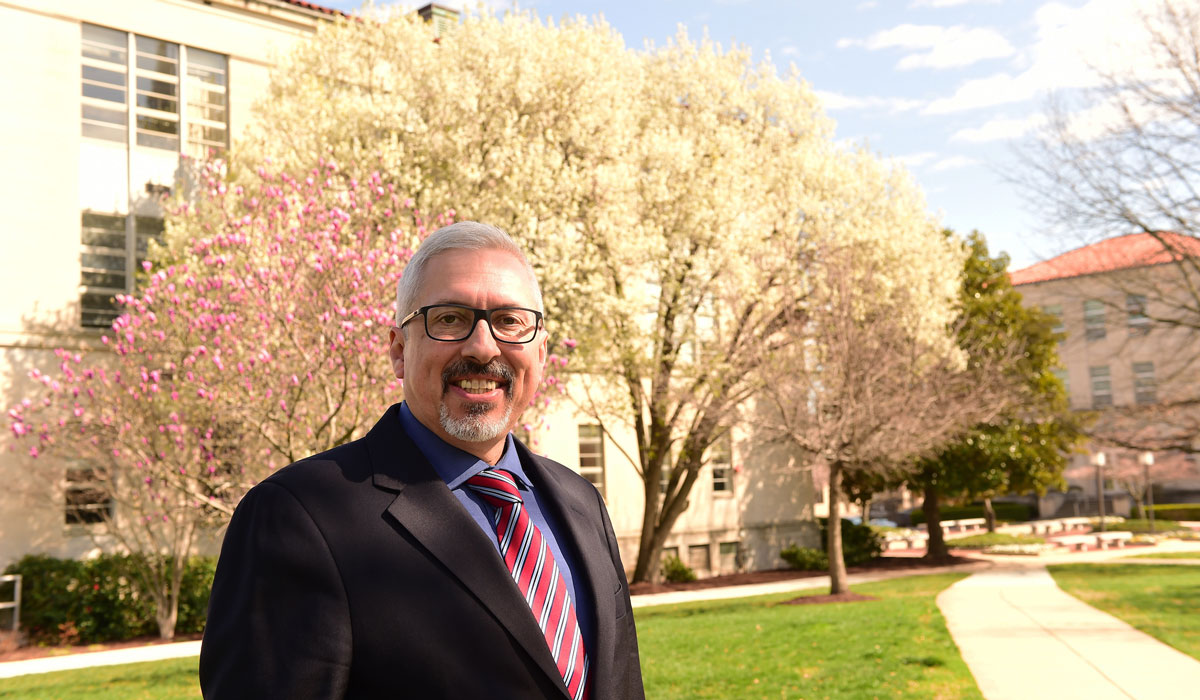

By Aaron Dominguez
Walk the campus of The Catholic University of America for 20 minutes and you will get a casual but vivid lesson in nearly 250 years of socioeconomic evolution in the United States. The names of our forebears surround us, carved into the very buildings in which we work and study. Each represents a part of the rich legacy of American Catholicism as a universal (catholic) church.
College campuses across the country can recount a similar history, in their own dialects and accents. At Catholic University, maybe unsurprisingly, much of the early part of our story has a distinct Irish brogue.
McMahon, Shahan, Maloney, O’Boyle, Reardon, and Ryan; these names look down on our students, faculty, and visitors from above the doors of many of our early buildings. Leahy, McGivney, O’Connell, McCort ….
While the names honor benefactors and leaders of the Catholic Church in America, they also recall the obstacles many generations of Irish Americans confronted after the “Great Shame” of the 1845–49 potato famine, and “Irish Need Not Apply” hostility that greeted thousands who landed on these shores.
Turn another corner and we see a change in the derivation of surnames encountered — Camelier, Carlini, DuFour, Hartke, Pangborn, Pryzbyla. These names also reflect the time and pace with which other immigrant communities made a home for themselves in America.
I do not consider myself a pioneer, though I acknowledge that I am the first Hispanic provost in the history of Catholic University. And I am happy that of the roughly 17 million college students enrolled in the U.S. today, more than two million are Hispanic.
As part of the newest chapter of our story, Catholic University welcomed more than 150 first-generation, first-year students to campus in fall 2019, many of whom have surnames that more closely resemble my own — a rate that I hope and expect will become a trend. I can say this with confidence because The Catholic University of America is a place of opportunity, where we fulfill the challenge given to us by Pope Leo XIII that “every department of learning in this same University be so constituted that … youth may have equal opportunity to fulfill a novel desire for knowledge.”
To do otherwise is to ignore the past and deny the future. At a recent conference I attended, a map was shown of congressional districts in the United States that had at least one Hispanic-serving school. They covered nearly the entire country. These students come primarily from Catholic families, like my own. This is the future of our country and our Church. It is also the future of our university and many others.
Catholic University is constantly changing and yet stays constant. What began as a graduate college for priests has grown and become something much bigger, broader, and more catholic exactly because it remains Catholic. We will continue to welcome new generations and new members into our family, and they will continue to enrich us.
Last fall, my colleague Trevor Lipscombe, director of our University press, published a commentary in TIME discussing how nearing a century ago another distressed people fled Europe to the United States, displaced by political, racial and religious persecution and violence. Later — often through their scholarship at American research universities — they helped ensure that America won the scientific, engineering, and manufacturing race that ended World War II.
Back on our own campus, I think on how the limestone of many of our historic buildings was cut by immigrants who found work in the quarries of the American Midwest. The fine masonry and carpentry was the work of immigrant craftsmen, and the grounds and gardens — then as now — were tended by immigrants. They and their descendants, and I am one, have found educations and a better life here in America.
The litany of names and their histories tell a beautiful story of the all-encompassing love of God. In this way, The Catholic University of America’s narrative truly reflects the character of the pilgrim Church on earth. We are a collective caravan of the people of God, each of us unique, but all are pilgrims together, all foreigners in this earthly life.
On this pilgrimage, we are united not by what we bring with us to the road, but by our shared and boundless love of God, and our journey is toward our true homeland in Heaven, sustained by his love.
The founders of this University asked of us that we be Catholic in identity and not just name: The teaching of the University should be faithfully Catholic, conformed in all things to the creed of the Church and the decisions of the Holy See.
The pilgrim identity of the Church was most recently described by Pope Francis, when he said, “The Church is not a static reality, but continually journeys throughout history to the final and marvelous goal, which is the Kingdom of Heaven.”
May The Catholic University of America be a place that welcomes every pilgrim to join us on our journey home.
A particle physicist, Aaron Dominguez worked at CERN during the Nobel Prize-winning search for the Higgs boson. He became the University’s provost in July 2019.